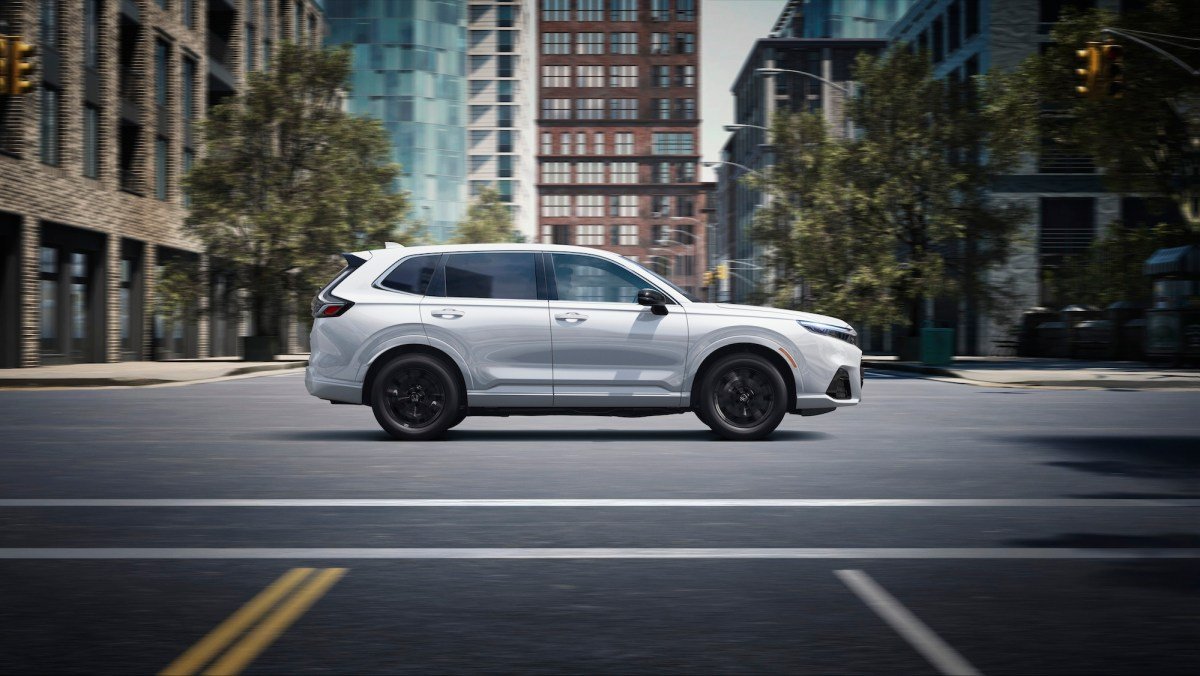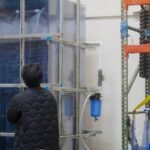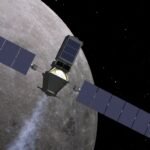Just like battery-electric cars 20 years ago, hydrogen fuel cell cars face the challenge of the old chicken and the egg dilemma. It’s a catch-22 situation, where there is a lack of demand for fuel cell vehicles as long as there is no supporting infrastructure, but it’s difficult to invest in infrastructure without enough people owning fuel cell cars.
Honda has a bold vision for the future, planning to exclusively sell zero-emission vehicles by 2040 through a fleet of both battery electric and fuel cell vehicles. Going even further, the company aims to achieve net-zero carbon emissions from all of its products and facilities by 2050.
To achieve this ambitious goal, Honda is investing in both the chicken and the egg.
The “egg” in this scenario is the 2025 Honda CR-V e:FCEV – a hydrogen fuel cell vehicle that I had the opportunity to drive for an entire day. Soon, this vehicle will be available for lease in California. While it may seem improbable to launch a hydrogen fuel cell vehicle in a country with limited infrastructure, Honda has a backup plan for this particular “egg.”
The company’s overall strategy for hydrogen involves four key areas: consumer and commercial fuel cell vehicles, stationary power stations, and construction machinery. The latter two are particularly interesting, as they require long-term power solutions, potentially increasing the demand for hydrogen and ultimately driving the development of better infrastructure.
“We are doing this to advance the hydrogen economy, because somebody has to,” explained Jay Joseph, VP of Sustainability and Business Development at Honda, referencing the company’s expansive plan.
The 2025 Honda CR-V e:FCEV is just one piece of the puzzle in Honda’s hydrogen plan. The company is also actively testing the use of hydrogen in other applications. For instance, their headquarters in Torrance, California utilizes a 576 kW hydrogen-powered generator as a backup to the grid and solar-powered data center. In addition, Honda is developing a Class 8 fuel cell semi-truck as a proof-of-concept here in the United States.
A New Twist on the Honda CR-V
Honda has been in the hydrogen fuel cell game for quite some time. The company first introduced a fuel cell car back in 2003 with the FCX, which was only available to fleets. A few years later, the FCX Clarity was released and in 2016, the Clarity Fuel Cell was launched.
Fast forward eight years to today, and we now have a hydrogen fuel cell option in Honda’s popular CR-V crossover – with a unique twist.
The e:FCEV can run solely on hydrogen, but it is also equipped with a 17.7 kWh battery that provides up to 29 miles of all-electric range. That’s right – this CR-V is a plug-in hybrid that replaces the traditional internal combustion engine with a hydrogen fuel cell.
This decision makes perfect sense when you consider the unpredictability of hydrogen supplies. Recently, California’s largest public supplier of hydrogen, True Zero, increased their prices by 20%, and Shell has closed down many of its hydrogen stations. Out of the roughly 50 remaining stations, many are prone to unexpected outages or simply don’t have fuel available. Having a backup battery not only alleviates some of the stress surrounding refueling, but it also allows for more efficient driving for short trips – a common occurrence among fuel cell owners. In fact, Honda discovered that most Clarity Fuel Cell owners only drove short distances of 5-10 miles at a time, which is not ideal for a hydrogen fuel cell. Using electrons from a battery in those situations just makes more sense.
Behind the Wheel
The 2025 Honda CR-V e:FCEV is powered by an electric motor, producing 174 horsepower and 229 pound-feet of torque – slightly less than the standard hybrid model. The vehicle can be driven in pure electric mode or in hybrid mode, which utilizes the hydrogen fuel cell when extra torque is needed. Drivers can also choose to save battery power for later or charge it while driving.
During my test drive at Honda HQ, I primarily drove the vehicle in hybrid mode and found it to be perfectly adequate.
However, this is a hydrogen fuel cell vehicle after all, and it drove like any other electric vehicle. The CR-V e:FCEV even offers different driving modes, such as Econ, Normal, Snow, and Sport. Although I was eager to test out the Sport mode, it didn’t seem to make much of a difference in terms of steering or throttle response. However, I appreciated that Sport mode retained my preferred regen braking settings. In Normal mode, the brakes automatically reverted to friction braking, which was frustrating. I wanted to maximize my energy recapture!
When the battery is fully charged and the hydrogen tank is full, the CR-V has a range of 270 miles. According to Honda, the small battery can be fully charged in under two hours using a Level 2 charger, but it can take up to 10 hours using a standard household outlet. And, if necessary, you can also use the car’s power to run household appliances or even charge one of Honda’s electric scooters during a power outage.
The good news is that Honda has stated they will be offering subsidies for hydrogen fuel with the CR-V e:FCEV. While the specifics have yet to be revealed, Clarity Fuel Cell owners were previously given either $15,000 or 36 months worth of free fuel. It’s unlikely that this incentive will apply to the CR-V, but it’s still a positive indication of Honda’s commitment to making hydrogen fuel cell technology more accessible.
A Love Story: Fuel Cells and Hydrogen
The CR-V’s carbon fiber hydrogen tank has a total capacity of 4.3 kilograms. The hydrogen atoms have a strong affinity for oxygen atoms, resulting in a highly passionate reaction. When they come together, they produce electrons that keep the party going! These electrons go to the Electric Motor disco and dance around, powering the motor and propelling the CR-V forward.
In technical terms, a fuel cell generates energy through a chemical reaction, which is then used to power an electric motor.
Inside and Out: The 2025 Honda CR-V e:FCEV
On the surface, the e:FCEV looks very similar to the standard CR-V, although keen observers might notice a few distinctive features. The hydrogen-powered version has unique front and rear fascias, along with a larger front overhang and a wider grille opening.
I absolutely love the clear taillight lenses on the e:FCEV, as well as the glossy black 18-inch wheels. This glossy black finish is carried over to the side mirrors as well.
Inside, you’ll find a push-button gear selector, even though there are only two options: Drive and Reverse. The materials used in the e:FCEV are eco-friendly, including faux leather seats and steering wheel. The vehicle also features a 10.2-inch digital gauge cluster that displays various power-related information – perfect for any tech-savvy drivers.
While the overall passenger volume remains the same, the hydrogen tank does impact cargo space. However, Honda has thoughtfully designed the space behind the rear seats with a two-tiered layout and a movable panel. The Honda engineers even mentioned that they were able to fit a large Costco pizza in that area with the panel secured in its topmost position. Now that’s innovative design! The panel also serves as a cover to keep valuable items out of sight.
The CR-V e:FCEV will only be available in the Touring trim, but it still offers plenty of features including heated and powered seats, a heated steering wheel, wireless charging, USB-A and -C ports, and a premium 12-speaker Bose audio system. The Honda Sensing suite of driver’s aids is also standard, as well as a 9-inch touchscreen with wireless Apple CarPlay and Android Auto. Consumers can choose between two colors: white or gray.
Currently, the Toyota Mirai is the only direct competitor to the CR-V e:FCEV. There are many appealing features of the Mirai, such as its sedan body style and impressive 400-mile range. However, the addition of a backup battery in the CR-V should make it a more attractive option for those looking for peace of mind.
The 2025 Honda CR-V e:FCEV will hit the leasing market this summer in California, and qualifying drivers will receive a coveted carpool lane sticker. Honda expects to lease around 300 of these hydrogen-powered vehicles, but their focus is on the long-term goal of promoting the use of hydrogen fuel in the next 25 years and beyond.








